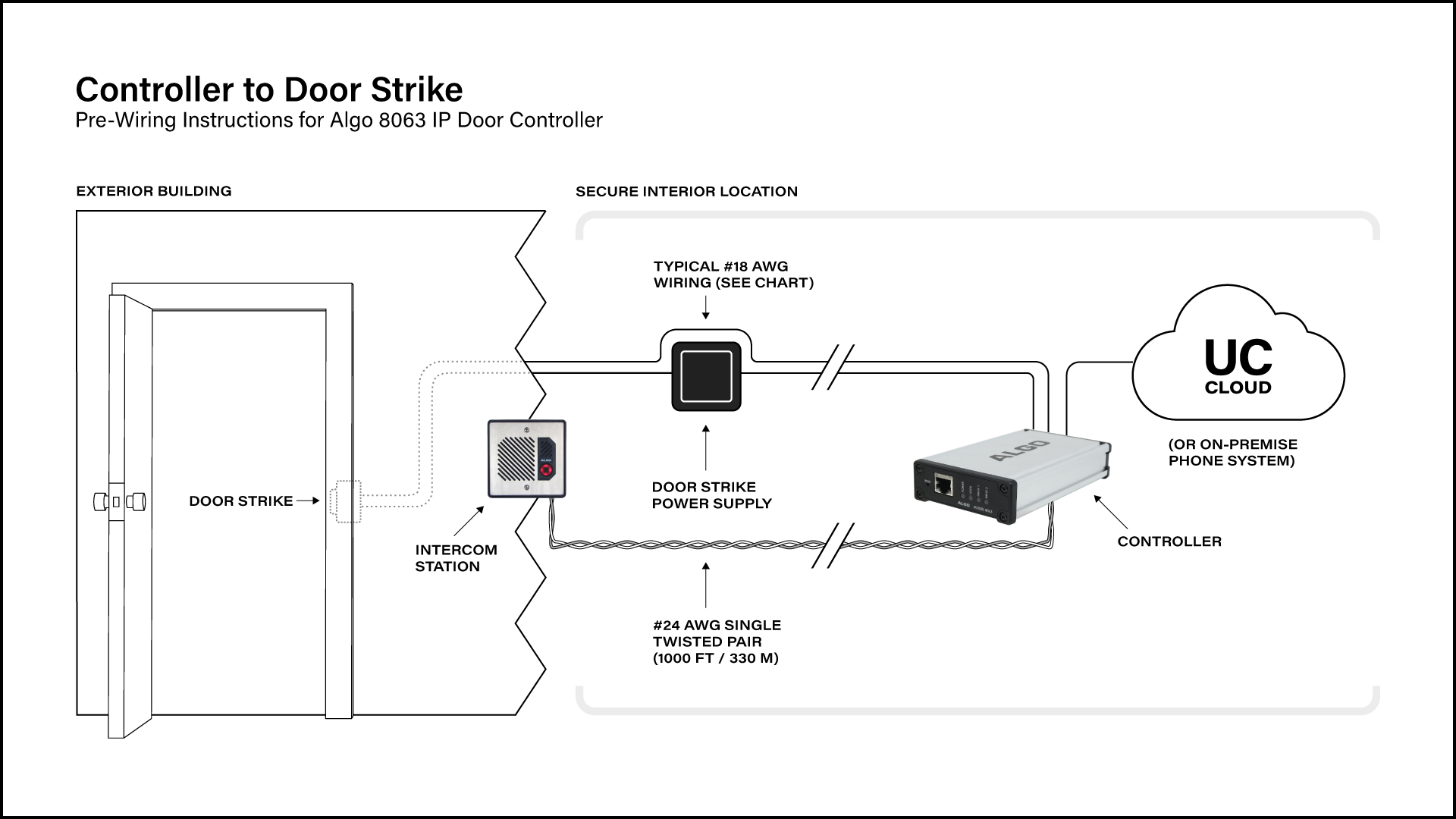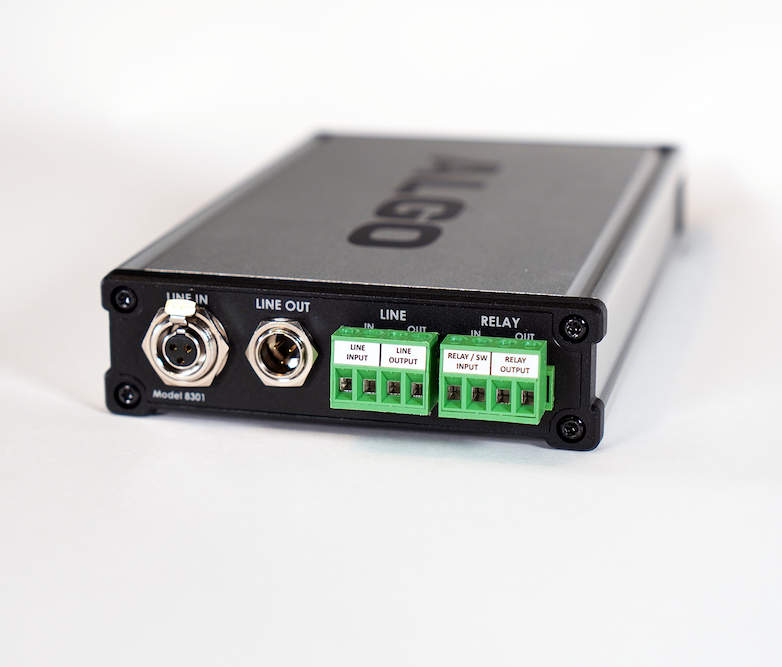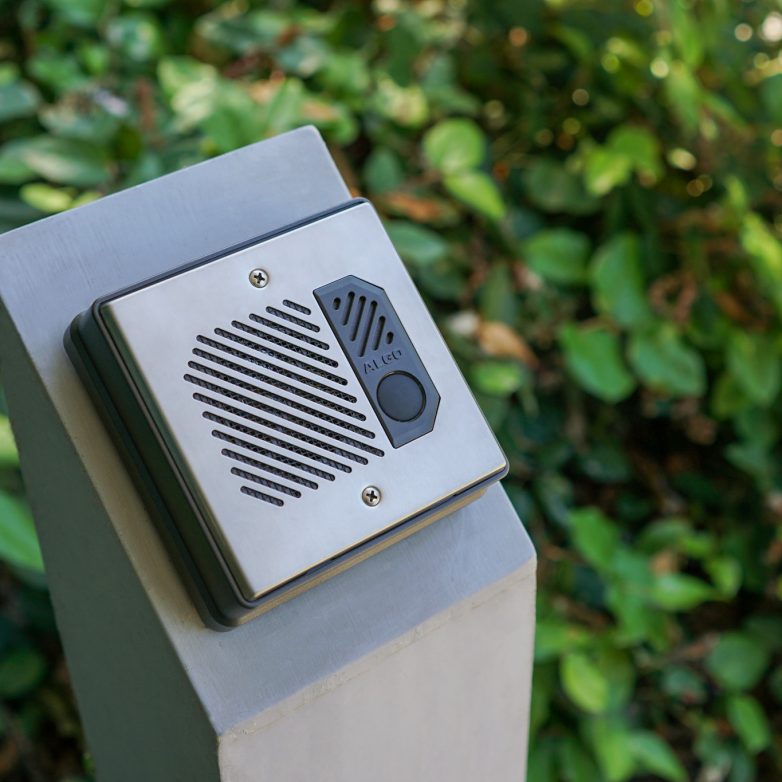Algo Secure Door Entry
Algo IP Intercoms for Secure Door Entry & Visitor Communication
Algo IP intercoms and doorphones provide hands-free visitor communication and access control at secure entrances. Algo intercoms are durable and outdoor rated for easy install at doors and gates for both outdoor and indoor locations. Algo secure door intercom systems are 3rd-party compliant with most leading collaboration and integration systems such as SIP, multicast, and API, with analog models available.
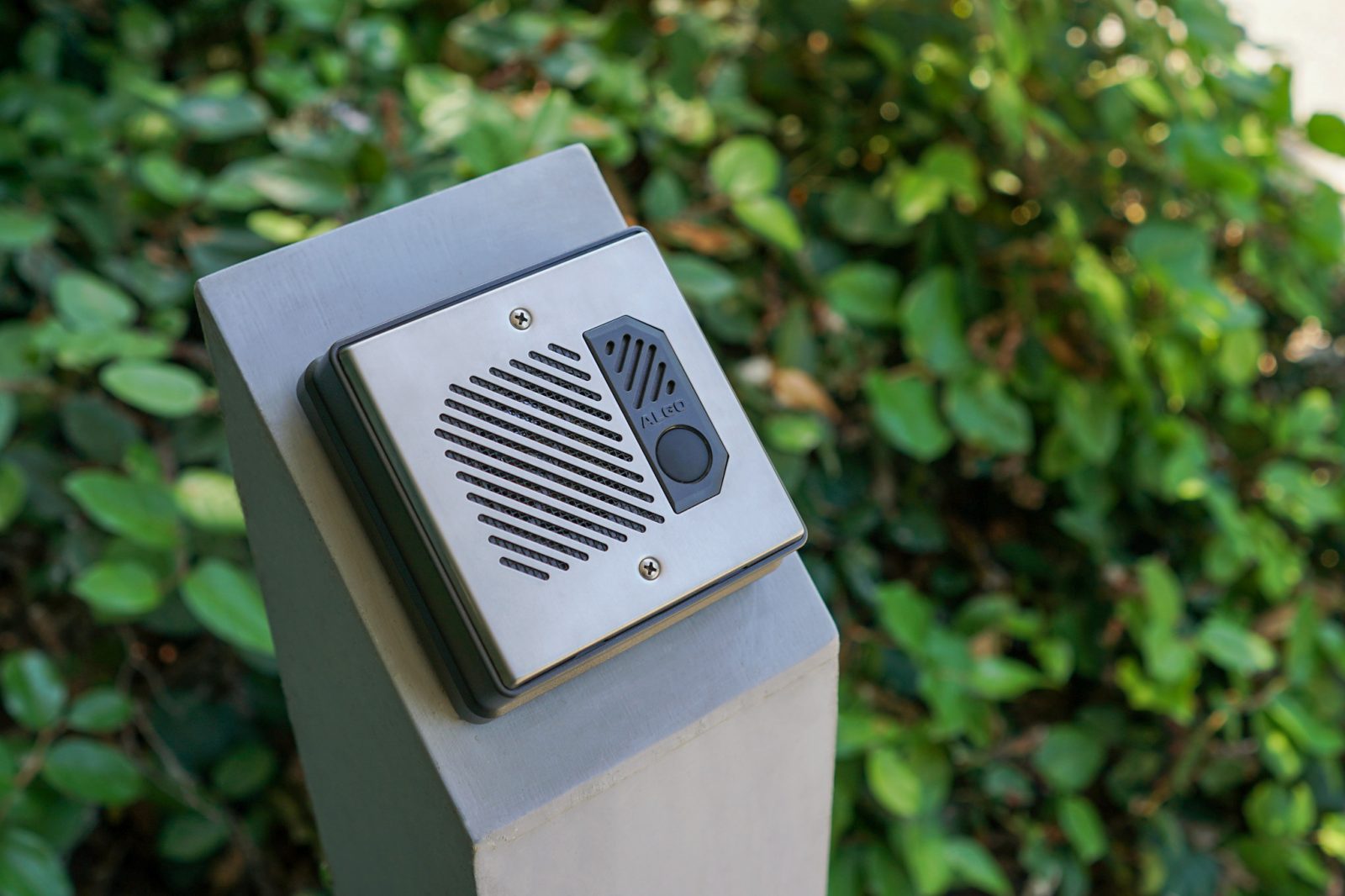
How Algo Intercoms Work
Algo Intercoms provide hands-free visitor communication at secure entrance doors and gates. The intercoms are outdoor rated, and designed for durability, longevity and security. Algo IP Intercoms are available in various form factors that are fit for purpose, ensuring users can meet the specific operational needs of their environments. Algo IP Intercoms are SIP compliant devices, able to connect seamlessly with leading Unified Communication systems. Algo offers both audio and video intercoms.
Visitors press the call button on the intercom station to initiate calling to a configured extension such as a security desk, building manager, or a hunt group. Answering the intercom call enables two-way communication with the visitor. Generally, any telephone, device, or client on the UC system can communicate with the intercom (e.g., mobile or wireless phone, soft client on a tablet or laptop, desk phone).
Alternatively, the intercom can be called directly, where it will auto-answer to permit a two-way voice call via the intercom station. During the intercom call the telephone keypad can be used to enter a door open code (e.g. digit 6, or up to four digits). Once activated the intercom’s access control relay will permit a momentary unlock of the entrance for the visitor to gain access through the door or gate in a secure and efficient manner. Duration of the relay activation is configurable, as is the open code and the extension called from the intercom station.
A separate controller is available with selected models. The controller is a PoE device, providing connectivity to the UC system, and the relay for door access control. As the controller is generally located inside the premise, this offers a secure solution in the event there is tampering of the public-facing intercom station. The relay and network / telephone connection are in no way exposed, and unauthorized entry to the building or access to the network is prevented.
Algo Intercoms can connect to any type of industry-standard door strike, gate activation system, or access / security control panel. A normally open or normally closed relay is available from the Algo controller for this purpose. A door strike is not included.
Choosing an Algo Intercom
Algo IP Intercoms enable organizations to easily establish two-way, hands-free visitor communication.
Algo door intercom systems easily register into most leading UC, Mass Notification, and Collaboration platforms. Using the DTMF functionality through Algo intercoms, users can access door unlock control with a telephone press from a calling or answering device.
Algo provides two types of intercoms, audio and video.
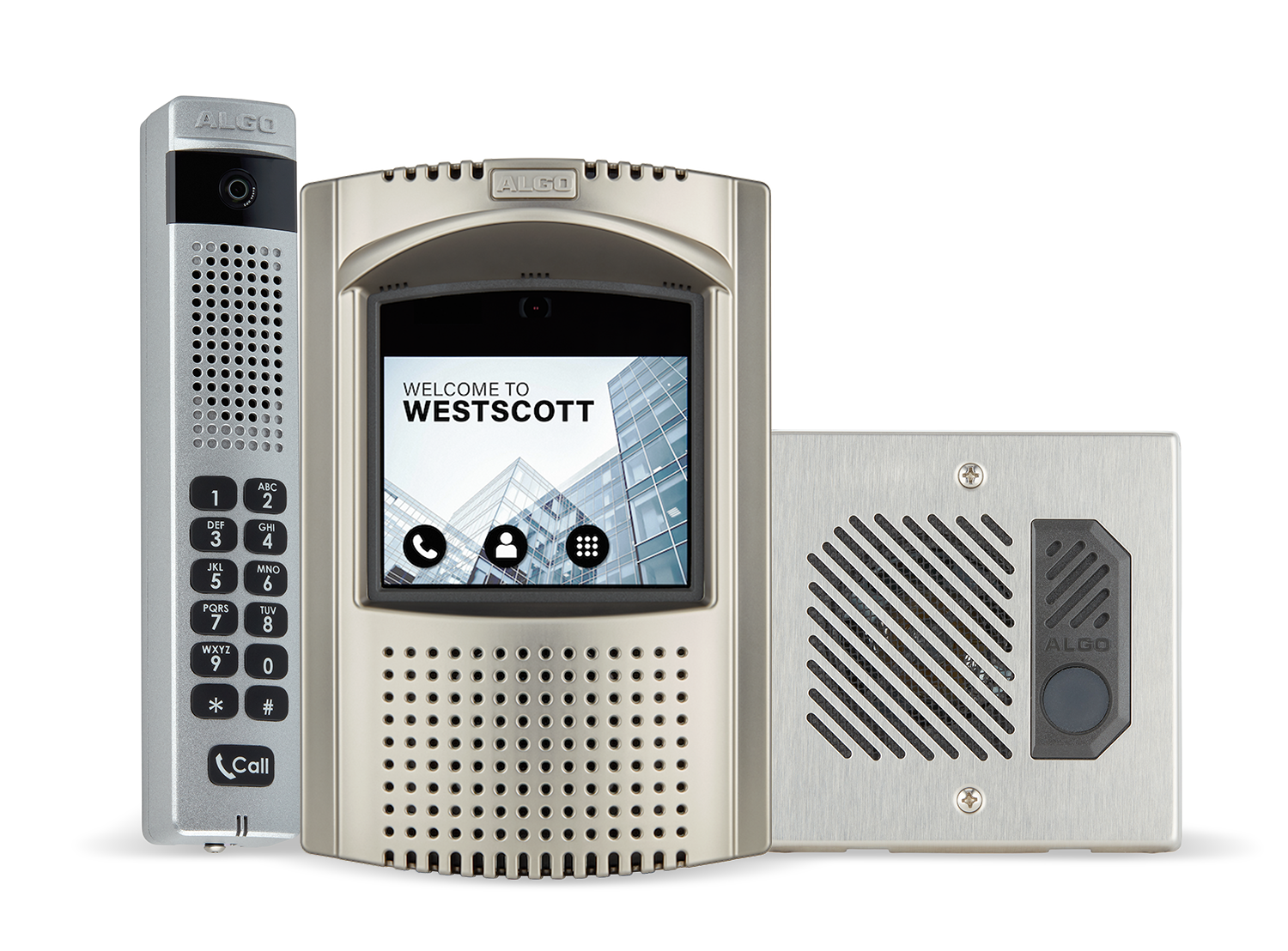
Audio Intercoms
Algo offers a variety of intercoms, including audio-only options. Algo audio intercoms support wideband capability, ensuring organizations can establish clear audio with visitors. The intercoms also offer visitor access control, creating a safe method of establishing two-way communication with those who wish to enter a building or the gated location. Algo’s audio intercoms include:
- 8201 IP PoE Intercom: A versatile, wideband, PoE IP intercom; the 8201 offers excellent audio quality, durability and performance all in a small, compact form factor.
- 8028 IP Doorphone (Controller + Intercom): The 8028 is designed as a two-part system, separating the components of the Algo 8201 into two pieces of hardware, a door station and controller. This unique two-part system serves as an excellent solution for analog intercom retrofits or for organizations requiring additional security benefits.
Video Intercoms
Algo video intercoms feature wideband audio for establishing clear communication with visitors while also providing video functionality to monitor visitor behavior at secure door or gate locations. Algo’s security and emergency intercoms allows for real-time video and audio communication between the entrance of a building and a reception desk at an office or in a school. Algo’s video intercoms include:
- 8039 IP Video Mullion Intercom: The 8039 offers audible and visual communication with visitors. Featuring wideband audio, wide-angle video and a keypad the narrow footprint of this intercom is ideal for installation on mullion door frames, however, the 8039 can be mounted to any surface.
- 8036 IP Multimedia Intercom: The 8036 offers audible and visual communication with visitors. With the added benefit of a highly customizable LCD screen the 8036 combines the functionality of an IP phone, security camera, and interactive kiosk via the touch screen interface.
Door Relay Control
Algo door relay control is provided by an Algo Intercom or a dedicated IP Door Controller. For organizations seeking added security, a door controller is always an available option, however some Algo intercoms offer embedded door control ability may not require a door controller. Whether a dedicated door controller is required comes down to the specific Algo Intercom selected.
The 8028 IP Doorphone, 8201 IP PoE Intercom and 8039 IP Mullion Intercom all feature door control capabilities whereas the 8038 IP Multimedia Intercom does not have door control capabilities unless paired with a dedicated door controller.
Algo Intercoms seamlessly integrate with any electronic door strikes featuring relay activation. This compatibility allows for flexible configuration, including normally open (NO) or normally closed (NC) setups, fail-open, fail-lock mechanisms, and compatibility with 24 V power supplies.
Door strikes are essential components of secure access door and gate intercom systems. Algo intercoms function with both electric and magnetic door strikes. Door strikes are power activated, and the conditions of the door strike are indicated as the following:
- Fail-safe – fail-safe door strikes will default to an open position during a power outage. When an intercom system loses power, the door strike will automatically unlock the door, allowing unrestricted access. Both electric and magnetic door strikes use fail-safe, ensuring exits can still be accessed during emergencies.
- Fail-secure – fail-secure door strikes will default to a locked state during a power outage. When an intercom system loses power, the connected door or gate will remain locked, preventing unauthorized entry. Only electric door strikes can use fail-secure, ensuring access control is maintained in high-security environments.
Door strikes receive signals from access control systems or intercoms and when valid entry credentials are presented, the control system sends a signal to the door strike, allowing it to release the lock and grant access.
Algo door intercom systems (for business) offer fail open and fail lock settings that can be configured within the web interface of the device. Organizations can choose between these settings based on the needs of the environment and the type of door strike used.
Door Sensors: Algo intercoms include door sensor terminals. With this relay input, Algo intercoms can detect when a door is open or closed.
Normally Open (NO) and Normally Closed (NC): Algo’s controller provides a NO or NC relay to integrate with a door or gate locking mechanism or access control panel. A momentary open code entered via the telephone keypad during the intercom call will activate the relay for visitor access.
The 8063 IP Door Controller
As mentioned above, a separate controller is available with selected intercom models. The Algo 8063 IP controller includes the network or telephone connection and the relay input to provide door / gate access control.
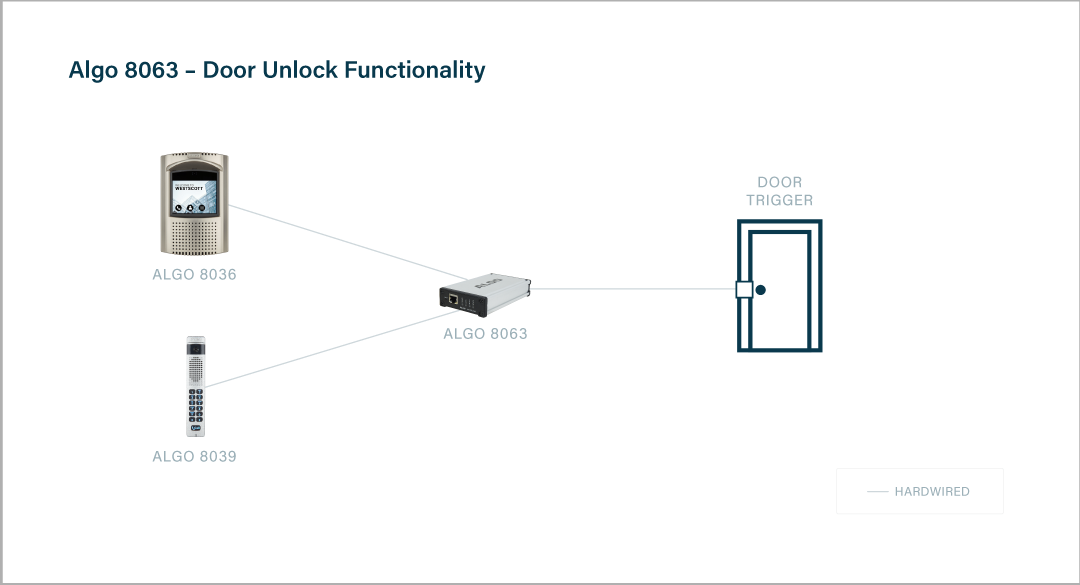
As the controller is generally located inside the premise, organizations are offered a secure solution in the event there is tampering of the public-facing intercom station. The relay and network / telephone connection are in no way exposed, and unauthorized entry to the building or access to the network is prevented.
The access control relay can connect to any type of industry-standard door strike, gate activation system, or access / security control panel. A normally open or normally closed relay is available from the Algo controller for this purpose. Door strikes are not included.
